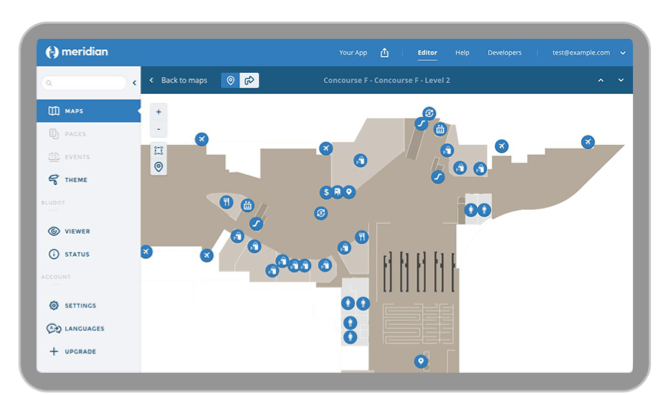eCommerce is flourishing in Asia Pacific. Already outperforming traditional giants such as the United States and Western Europe, the region is set to score $1.4 trillion in revenue by 2020 – with Southeast Asia, particularly Singapore, Indonesia and Malaysia, spearheading the momentum. Populations are increasingly demanding to be plugged in – and as mobile and internet penetration rates to continue their ascent, the growth of today's eCommerce market presents seemingly endless opportunities.
However, as a burgeoning stream of businesses enters the market, the reality of domain overcrowding threatens the longevity of pure-play online retail businesses. The stiff competition in vying for customer attention and mindshare amidst the crowded digital space, and the emergence of eCommerce giants such as Alibaba, make it an uphill task for online-only retailers to get noticed, much less to stand out from their competitors. Earlier this year, Rakuten and Ensogo – leading eCommerce sites in Asia, ceased business operations in Southeast Asia, citing that the region's eCommerce scene is "too competitive" and "too complicated".
The Way Forward: 'Bricks and Clicks'
In creating a unique brand experience amidst the online competition, omnichannel strategies are gaining traction in modern online retail business – this involves the integrated cross-use of multiple channels, from virtual to physical, in order to exploit synergy benefits. This transformation is already taking root, from global giants such as Amazon to regional market leaders such as Zalora, previously online-only businesses are now reaping the benefits of integrating online offerings with a traditional brick-and-mortar presence that is enhanced with digital connectivity.

Creating a seamless, highly customized shopping experience across channels as such allows businesses to optimize:
- Shopper engagement – The more frictionless the transaction, the more likely a consumer will make a purchase. Consumers are also increasingly tapping on social media to read reviews, which in turn affects their purchasing decision.
- Shopper loyalty – Through multiple channels, retailers can better understand shoppers' behavior and tailor marketing strategies to meet the needs of the consumer in real time. Studies have also shown that shoppers who shop via multi-channels tend to be more loyal than those who shop using one channel.
- Store operations – Retailers can also benefit from the adoption of a back-end operations and pricing consistencies.
According to Accenture, GenMobile Millennials will further drive this movement. They represent close to half of the Asia Pacific population and possess a spending power that is higher than any previous generation. However, there is heightened pressure for today's retailers to cater to the demands of the GenMobile shoppers as they are one of the most diverse, informed and digitally connected generations with unique attitudes and motivations – the breed of mobile-connected, digitally savvy individuals who expect a rich, and personalized anytime, anywhere shopping experience across the multiple devices that they carry.
Powering the hybrid shopping experience with IoT and mobility
For online retailers, integrating 'brick-and-mortar' is not just about opening a physical store. It's about physically delivering a unique brand impression that allows customers a seamless, personalized and intuitive in-store experience. As such, the rise of mobile connectivity and IoT in Asia could not be more timely. It has handed retailers an unprecedented opportunity to bridge the digital and physical experience, and redefine their omnichannel strategies.
Imagine a personal pocket concierge that understands shoppers and knows how to engage them. A store that is smart enough to know consumer interests and preferences to deliver enticing offers and promotions. Retailers could bring interaction with the products available for sale, by giving real-time information on price, reviews and availability in order to enhance shopping experiences. Through insights into consumer profile and behavior, retailers could intuitively recommend products aligned to information, such as clothing size and online buying history.

This is the future of GenMobile retail and it is already becoming a reality with IoT and mobility technology, allowing retailers to deliver tailor-made experiences to each individual customer. A three-pronged mobile-first, IoT-driven approach can help businesses make their omnichannel strategies a reality:
- Reliable and highly scalable wireless infrastructure - Wi-Fi based analytics tools drives data into actionable business intelligence that businesses can use to gain insights into customers' profile, enabling a rich and personalized shopping journey
- Mobile app and location services – Through the use of beacons and IoT sensors, retailers are able to transform the shopping experience by delivering relevant context-sensitive information to shoppers' mobile phones based on their real-time location and allowing wayfinding through a dedicated mobile app.
- Centralized management tools – In order to efficiently manage the throng of data and devices that retailers will have access to, they would need a smart and simple platform that makes sense of analytics, manages networks and devices, and monitor and troubleshoot issues that could potentially jeopardize the business.
Looking ahead, the dependency on either an online-only or a pure-physical approach will likely put businesses on the losing end in the modern competitive retail world. Retailers have to understand that the thin line that separates omnichannel and multichannel lies in integration. In a true omnichannel environment, the physical and digital work in tandem, merging into a seamless, value-added shopping journey that rises up to the demands exacted by today's new-age GenMobile shoppers.




